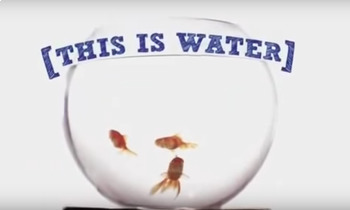Hazing vs. Seniority
Now that educational institutions around the country address the dangerous consequences of sports hazing, athletic teams face changes in their culture and values.
February 21, 2023
This year’s Laguna soccer season began with a meeting in which the topic of hazing was discussed. It was established that from this point forward, freshmen are no longer responsible for tasks such as bringing out the water, preparing the equipment, and making sure that everything is returned and ready for use at the next practice.
Laguna, however, is not alone in deciding to crack down on sports hazing; many colleges and universities across the country have followed suit in addressing the matter as hazing activities have become increasingly dangerous.
As of 2017, nearly half of every college graduate experienced some form of hazing. Far more than social-related hazing, varsity sports were responsible for the majority of hazing incidents. There are several reasons why sports hazing is different from social hazing, but it is just as common and just as dangerous. For example, the Claremont McKenna men’s soccer team’s fall season has been canceled due to “demeaning and potentially dangerous” hazing.
In Laguna’s situation, hazing today was nowhere near as extreme as it was in the past. According to Ashley Koegel ‘00, a writer from The Fourth Estate, hazing used to be much worse. “Seniors kept a list of any underclassmen who stepped on the sacred Senior Lawn, soon the dunkings began. The addition of a plastic pool provided a twist of the traditional form of dunking,” Ashley said.
Laguna Dean of Students Blake Dorfman said “I find it unbelievable that the administration would find this acceptable or even tolerable. Even though it may seem like something that is meant to be fun, it most likely caused internalized pain and resentment in those being dunked.”
Though Laguna’s recent efforts to address hazing in sports don’t go without reasoning, sports hazing is commonly confused with team seniority. “Seniority,” Dorfman says, “is a system in which a team values experience and structure. Freshman taking the water out to the fields, for example, is a responsibility that everyone on the team at one point has. It is about upholding a good work ethic and team structure.”
“Where this becomes hazing is when a person or group of people mentally or physically harasses another group of people simply to make them miserable. The negative consequences of hazing are never worth any potential strengthening of a team,” Dorfman said.
According to sports writer Jenny Nalepa, four levels of trust exist within a sports team: the team’s trust in the coach, the coach’s trust in the team, the players’ trust in one another, and the players’ trust in themselves.
Hazing, however, compromises every level of trust. The players cannot trust the coach if they are not there to protect their players. The coach cannot trust the team if the players are harming one another. The players cannot trust each other if harassment occurs on a common basis. And lastly, the players cannot trust in themselves if failure to perform leads to their harassment.
Clearly defining hazing may be a challenging task, but what should ultimately distinguish it from seniority is whether it benefits the well-being of the team altogether. Obviously, no system or structure is valid unless the entire team agrees upon its validity. But however institutions decide to rule out hazing from sports participation, we can expect the athletic environment to look far different in the future than it has in the past.

















